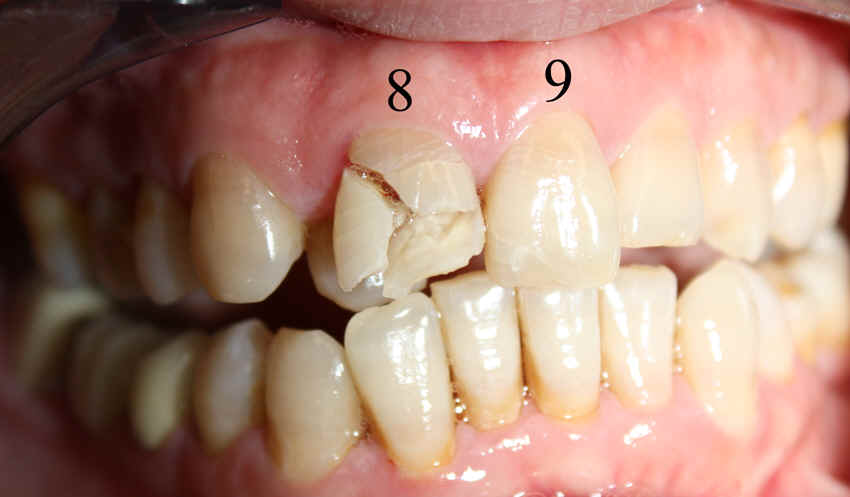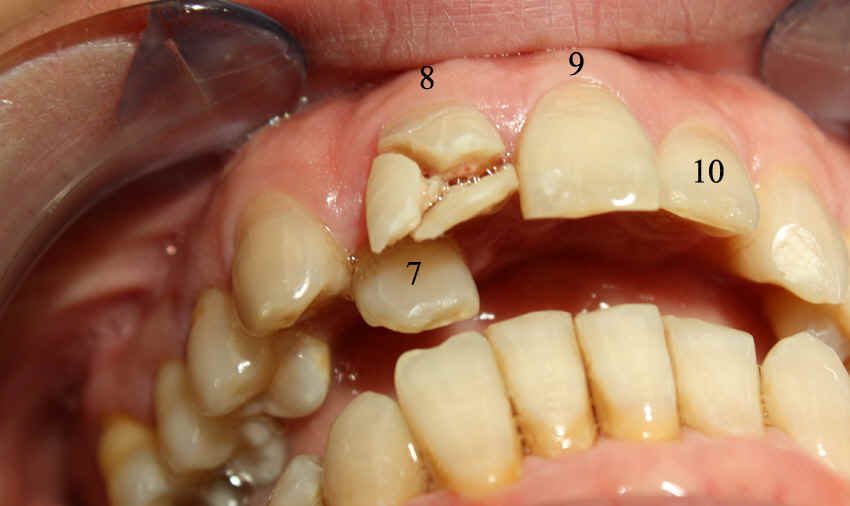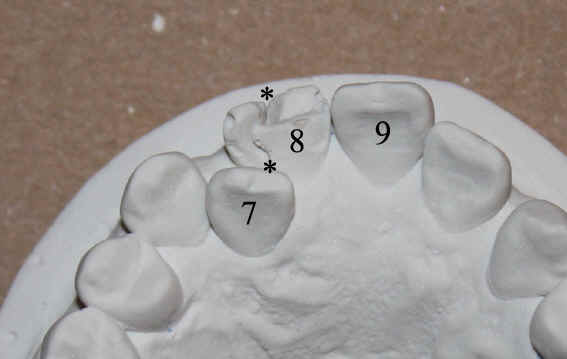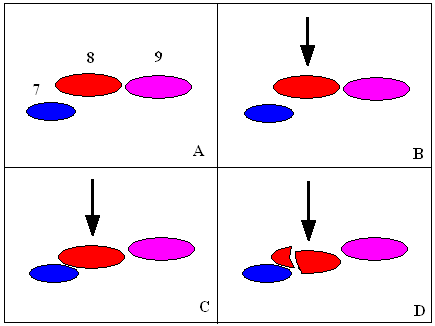



 |
 |
| Fig.1 | Fig.2 |
 |
 |
| Fig.3 | Fig.4 |
Dental Education Lecture: Tooth Trauma and Braces
Tooth trauma (such as #8 in Fig. 1) is traumatic to our body and mind. It happens so sudden and dramatic that nobody can accept the fact readily.
However the very next tooth #9 (Fig.1) remains basically unharmed (Fig.1 magnification). Why is there so much difference between these two teeth? We think that the severity of tooth trauma may be related to our existing tooth misalignment.
Let this misfortunate patient to raise her head up a little bit. We note that a lateral incisor (#7) is behind a central incisor (#8, Fig.2). The lateral incisor on the other side (#10) is quite normally positioned, next to the central incisor (#9).
When her head and the upper teeth turn further up, the position of the teeth #7, 8 and 9 is shown in Fig.3 (tooth model). You may notice a vertical break line (between two asterisks (*)) in the tooth #8.
There are four diagrammatic drawings in Fig.4. Fig.A shows the relative position among #7-9 as Fig.3. When the tooth #8 sustains a sudden impact (arrow in Fig.B), it moves backward (Fig.C). The outside half of #8 is stopped by #7 (a rigid object), whereas the inner half of #8 keeps going backward. All of the sudden, #8 is broken in halves (Fig.D). When the similar impact exerts upon #9, it may move backward and once the impact is gone, it springs back. The tooth structure may remain intact for the tooth in normal position.
The main message is that we may avoid severe tooth injury if we have had braces in our early life to fix tooth misalignment.
You want to see the progress of the treatment (1, 2, 3) for this case?
Xin Wei, DDS, PhD, MS 1st edition 08/27/2009, last revision 02/19/2017